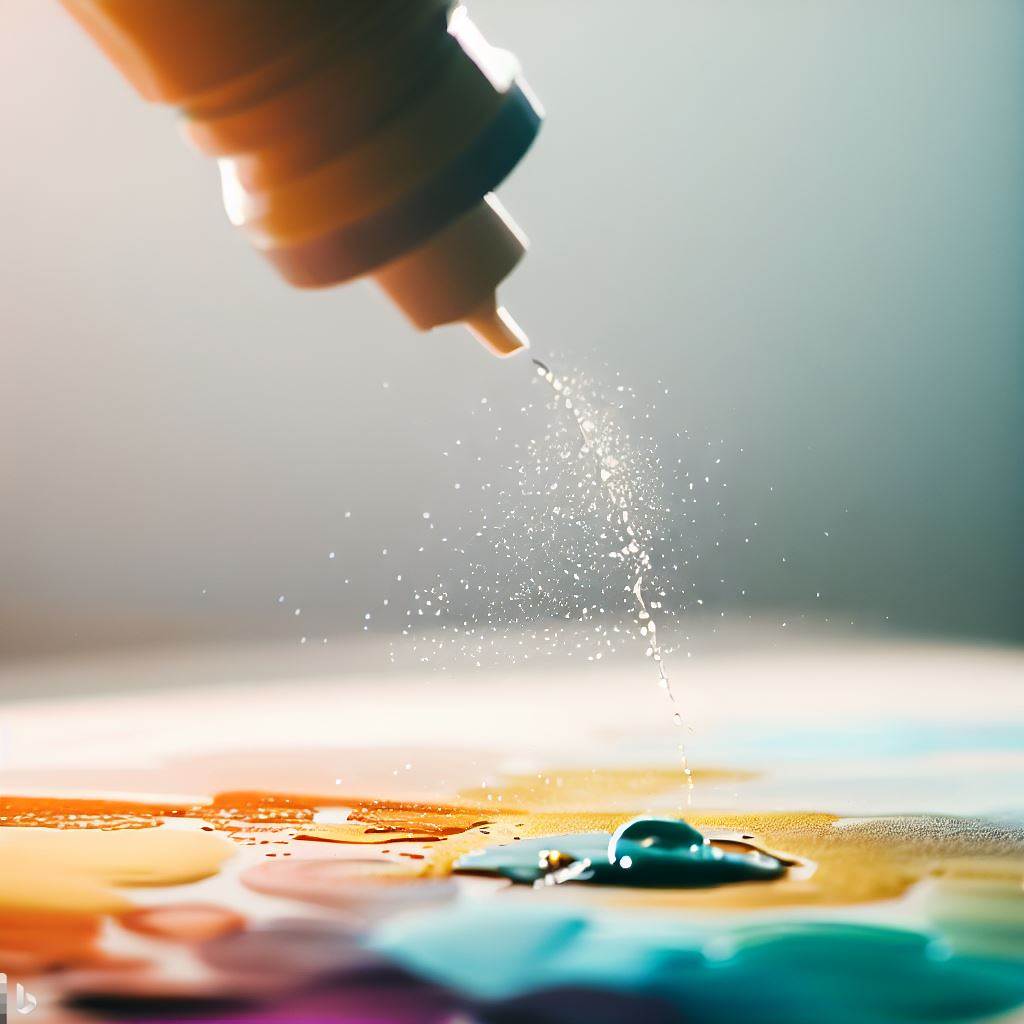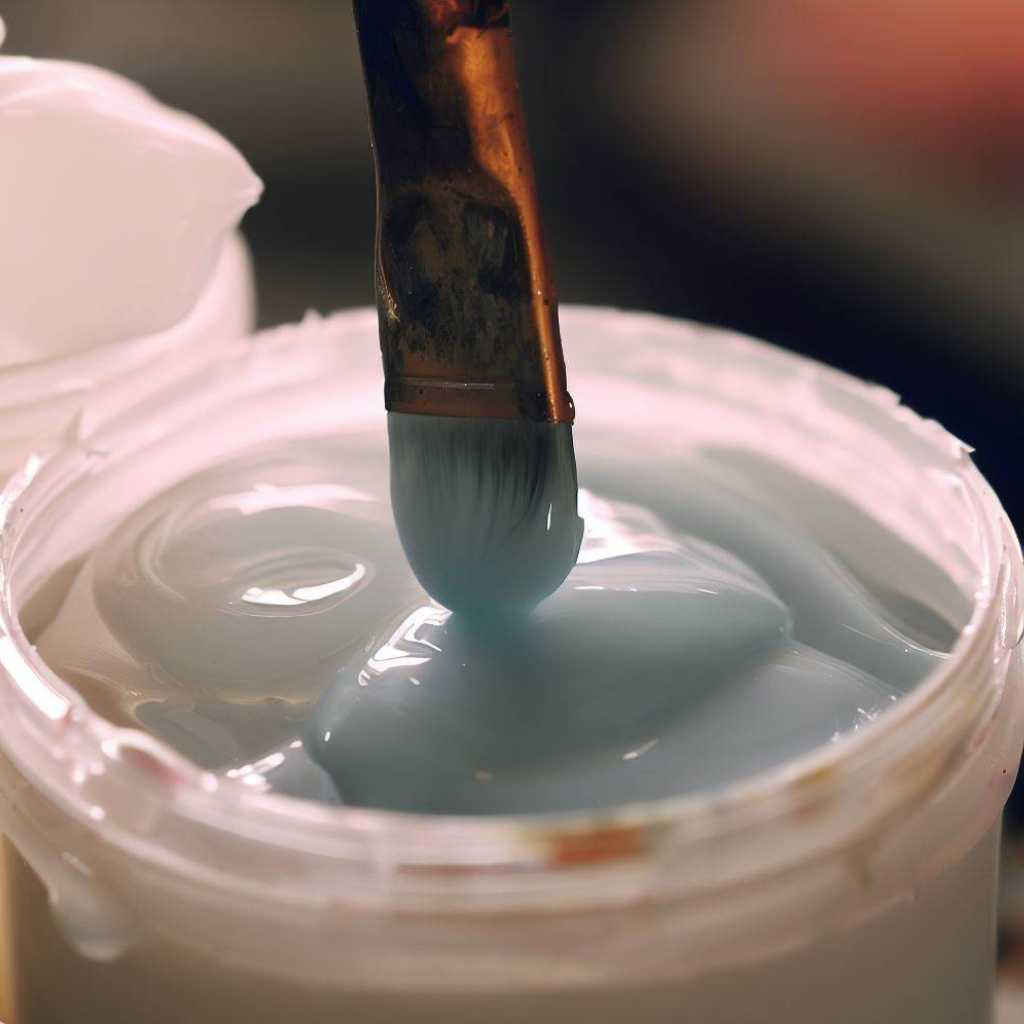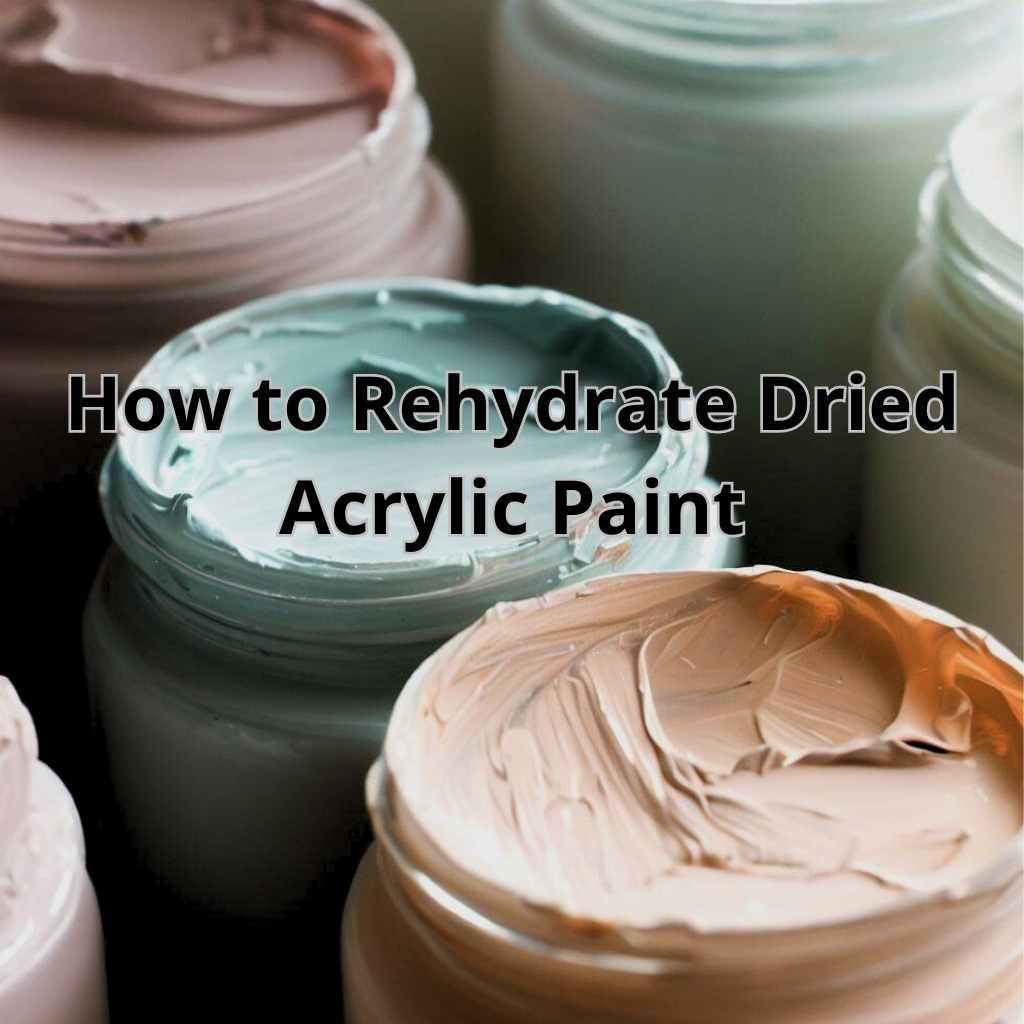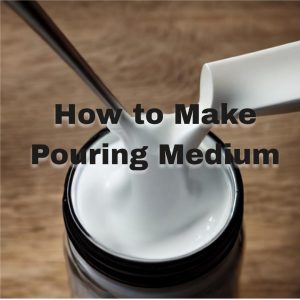Are you frustrated with finding your once-vibrant acrylic paints transformed into dry, lifeless clumps? It’s a common problem that many artists encounter, but fear not! Rehydrating dried acrylic paint is within your reach.
Say goodbye to wasted resources and hello to a world of endless artistic possibilities.
In this blog post, we will dive into the fascinating world of how to rehydrate dried acrylic paint. We understand the immense value of preserving your precious paints and unlocking their full potential.
Let’s go on this journey together and reclaim the brilliance of your dried acrylic paints.
Tools and Materials Needed
To rehydrate dried acrylic paint effectively, you will need the following tools and materials:
- Distilled water: Distilled water is free from impurities that could affect the quality of the paint.
- Palette knife: A palette knife helps in scraping out dried paint.
- Glass palette or palette paper: Provides a smooth surface for mixing
- Spray bottle: Useful for misting water
- Acrylic medium: Used as an alternative to water
- Isopropyl alcohol: Can be used for rehydration and cleaning.
Assessing the Dried Acrylic Paint
Before beginning the rehydration process, it is essential to assess the dried paint to determine its condition and usability:
- Types of dried acrylic paint: Acrylic paint can dry in different forms, such as thick clumps, semi-solid chunks, or a hardened film.
If the paint is particularly stubborn or has hardened in clumps, you can mist it with water before mixing. This helps moisten the paint and makes it easier to break apart.
- Evaluating the condition: Check for signs of mold, mildew, or discoloration in the dried paint. Assess its texture and determine if it is salvageable.
- Factors to consider: Consider the age of the paint, the colors you intend to rehydrate, and the importance of their use in your artwork.
How to Rehydrate Dried Acrylic Paint: Techniques
There are several effective techniques for rehydrating dried acrylic paint. Let’s explore three popular methods:
A. Water Rehydration Method
Step-by-step instructions for using water to rehydrate acrylic paint:


- Gather the dried paint and place it on a palette or palette paper.
- Gradually add small amounts of distilled water to the paint, using a spray bottle or dropper.
- Begin with a ratio of 1:1 (water to paint) and adjust according to the desired consistency.
- Use a palette knife to mix the water into the paint, breaking down any clumps.
- Continue adding water and mixing until you achieve the desired consistency.
- Be cautious not to add excessive water, as it can dilute the paint’s color intensity.
B. Acrylic Medium Rehydration Method
Step-by-step instructions for using acrylic medium to rehydrate paint:

- Place the dried paint on a palette or palette paper.
- Add a small amount of acrylic medium to the dried paint.
- Mix the acrylic medium thoroughly into the paint, using a palette knife.
- Continue adding more medium and mixing until the paint reaches the desired consistency.
- Be mindful of not overloading the paint with medium, as it may alter its drying time and finish.
Suitable acrylic mediums for rehydration:
Gel mediums: Provide a thicker consistency and enhance the texture of the rehydrated paint.
Fluid mediums: Offer a more fluid consistency and can be used for transparent glazing effects.
C. Alcohol Rehydration Method
Step-by-step instructions for using alcohol to rehydrate acrylic paint:
- Transfer the dried paint onto a palette or palette paper.
- Moisten a clean brush with isopropyl alcohol.
- Gradually add the alcohol to the dried paint, mixing it with a palette knife.
- Continue adding alcohol and mixing until the paint becomes pliable and workable.
- Exercise caution with alcohol usage, as it can affect the paint’s properties.
Precautions to take when using alcohol:
- Use isopropyl alcohol in a well-ventilated area.
- Avoid excessive use of alcohol, as it can cause the paint to become too thin or alter its color.
Additional Techniques for Rehydrating Acrylic Paint
In addition to the primary rehydration methods mentioned above, there are two additional techniques that can prove useful:
A. Heat Rehydration Method
Step-by-step instructions for using heat to rehydrate paint:
- Set up a heat source such as a hairdryer, heat gun, or warm water bath.
- Place the dried paint near the heat source, ensuring it is not too close to prevent overheating.
- Allow the heat to soften the paint, periodically checking and gently stirring it with a palette knife.
- Continue applying heat until the paint reaches the desired consistency.
Suitable heat sources and precautions to consider:
Hairdryer: Use the low heat setting and maintain a safe distance to prevent overheating.
Heat gun: Start with the lowest setting and maintain caution, as it can generate high temperatures.
Warm water bath: Place the paint container in warm water, ensuring it does not come into direct contact with the water.
B. Blending with Fresh Paint
Technique for incorporating fresh paint to rehydrate dried paint:
- Squeeze out a small amount of fresh acrylic paint onto a palette.
- Gradually add the dried paint to the fresh paint, mixing them together with a palette knife.
- Blend the two paints until you achieve a smooth and consistent texture.
Tips for achieving a smooth and consistent blend:
- Start with small amounts of fresh paint and gradually add the dried paint.
- Mix the paints thoroughly, ensuring there are no visible clumps or inconsistencies.
- Experiment with color mixing techniques to achieve the desired hue and shade.
Troubleshooting and Common Issues
Rehydration may present some challenges. Here are solutions for common problems encountered during the process:
- Handling clumps, lumps, and inconsistencies:
- Break down clumps by adding water or medium gradually and thoroughly mixing the paint.
- Strain the paint through a fine mesh sieve to remove any stubborn lumps.
- Dealing with changes in paint texture or color:
- Adjust the consistency by adding water or medium in small increments until the desired texture is achieved.
- If the color shifts, experiment with color mixing to restore the original or desired hue.
Preserving and Storing Rehydrated Acrylic Paint
To preserve and store rehydrated acrylic paint, follow these tips:
- Store in airtight containers: Transfer the rehydrated paint into clean, airtight containers to prevent drying out and contamination.
- Label containers: Clearly label each container with the color name, date, and any relevant details.
- Store in a cool, dry place: Keep the containers away from direct sunlight and extreme temperatures.
Shelf life and considerations for future use:
Rehydrated acrylic paint typically has a shorter shelf life compared to fresh paint. Check for signs of mold, mildew, or changes in texture before using it in future artworks.
Alternative Uses for Rehydrated Acrylic Paint
Rehydrated acrylic paint opens up a world of creative possibilities beyond traditional painting techniques. Here are some alternative uses to inspire your artistic exploration:
- Mixed Media Artwork: Combine rehydrated paint with various materials for textured and captivating mixed media pieces.
- Abstract Backgrounds: Create vibrant and dynamic abstract backgrounds using rehydrated acrylic paint through pouring techniques or layering colors.
- Textured Surfaces: Add texture to your artwork by applying rehydrated paint with a palette knife or other texturing tools.
- Collage Work: Use rehydrated paint as an adhesive for collaging papers, fabrics, and other lightweight materials.
- Printmaking: Incorporate rehydrated paint into mono-printing or as a printing medium for unique textures and patterns.
- Sculptural Applications: Mold rehydrated paint into sculptural forms or use it as a modeling paste for three-dimensional artworks.
FAQs
- How long does it take to rehydrate dried acrylic paint?
The time required to rehydrate dried acrylic paint can vary depending on factors such as the paint’s thickness and the rehydration method used. It’s recommended to allow sufficient time for the paint to absorb the rehydrating agent, and it may take anywhere from a few hours to overnight.
- Is it possible to rehydrate dried acrylic paint multiple times?
While it is possible to rehydrate dried acrylic paint multiple times, repeated rehydration may affect the paint’s overall quality, consistency, and color intensity. It’s recommended to rehydrate and use the paint as needed to avoid diminishing its performance over time.
- Can rehydrated acrylic paint be used for pouring techniques or other specialized applications?
Yes, rehydrated acrylic paint can be used for various painting techniques, including pouring. However, keep in mind that the consistency of rehydrated paint may differ slightly from fresh paint, so adjustments may be needed to achieve the desired flow and texture for specific applications.
- Can I rehydrate dried acrylic paint that has additives or additives mixed into it?
Rehydrating dried acrylic paint that contains additives or mix-ins may pose challenges, as these additives may alter the paint’s properties and behavior. It’s best to consult the specific manufacturer’s instructions or seek advice from art supply professionals when dealing with paint-containing additives.
- Can I rehydrate dried acrylic paint that has been exposed to extreme temperatures?
Yes, you can attempt to rehydrate dried acrylic paint that has been exposed to extreme temperatures. However, be aware that prolonged exposure to extreme heat or cold might have altered the paint’s properties, and the results may vary.
Final Thoughts
As we conclude, learning how to rehydrate dried acrylic paint is a valuable skill for artists who want to make the most of their materials and unleash their creativity.
By understanding the composition and properties of dried acrylic paint, as well as the various rehydration methods available, you can rescue your dried-up pigments and extend their lifespan.
Whether you choose the water rehydration method, acrylic medium rehydration, or alcohol rehydration, each technique offers unique advantages and considerations.
Now, go forth and let your rehydrated acrylic paint shine on your canvas, as you create masterpieces that embody both artistic brilliance and sustainability.
While learning how to rehydrate dried acrylic paint, it’s also useful to understand what materials repel acrylic paint to avoid potential issues in your artwork




